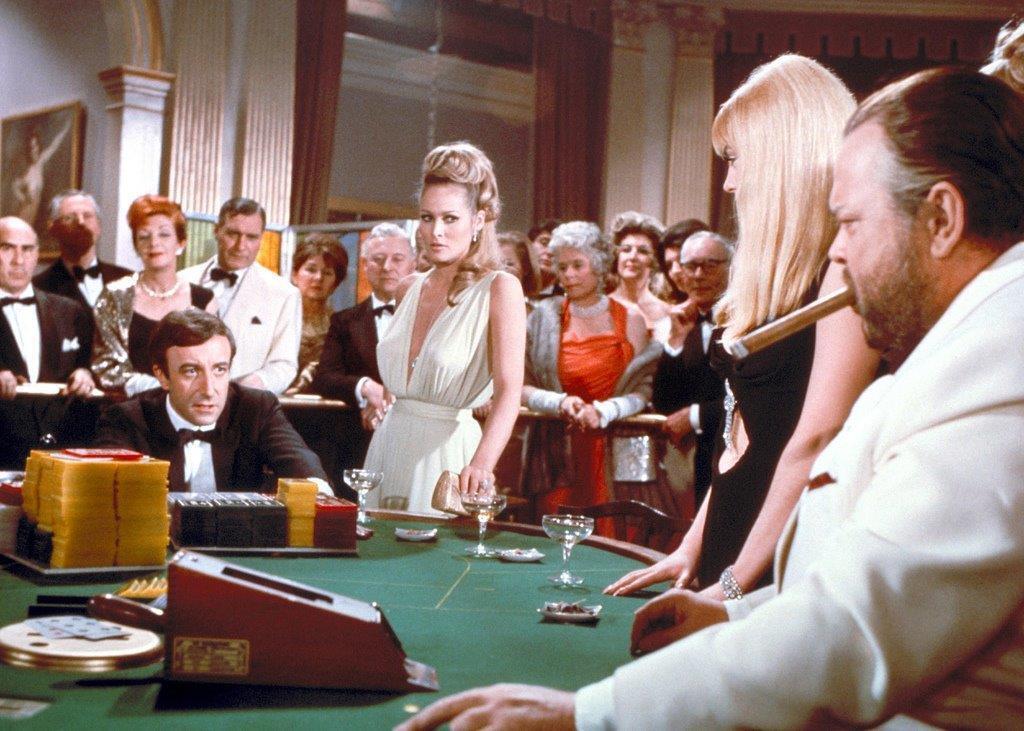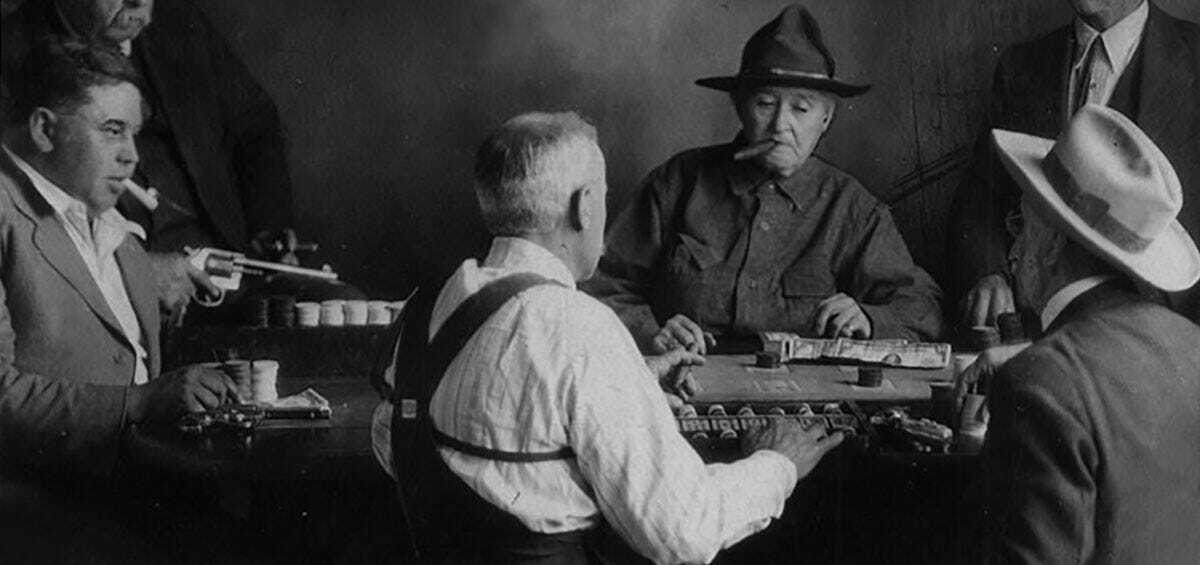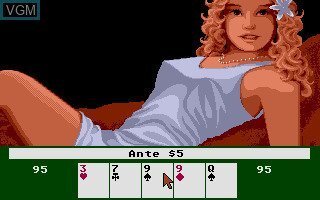Poker Has Long Been Seen as a Man’s Game
Poker originated in 19th-century America—on Mississippi riverboats, in saloons, and military outposts—where it quickly became a symbol of rugged masculinity. These were spaces defined by bravado, risk-taking, and male bonding, with women largely excluded by both social norms and explicit barriers.
This exclusion wasn’t incidental. Poker served as a stage for male rituals: gambling, drinking, storytelling—activities from which women were systematically barred. Over time, this fostered a persistent “boys' club” culture that has proven resistant to change.
Cinema helped reinforce this dynamic. In classic films, poker tables were arenas for male confrontation, while women were cast as barmaids, lovers, or bystanders—never players.
Fast-forward to today’s casinos, televised tournaments, and local poker rooms, and the imbalance remains stark: around 95% of live and professional tournament players are men.
A few exceptional women—Barbara Enright, Jennifer Harman, Vanessa Selbst—earned widespread respect in their time, even gaining entry to the Poker Hall of Fame. But their prominence, now largely part of poker history, only underscores how rare such breakthroughs have been in an overwhelmingly male environment.
Women Who Broke Through — But at a Cost
A handful of women have broken into poker’s male-dominated world—but often by adopting traits traditionally seen as masculine: decisiveness, emotional detachment, strategic aggression. These qualities aren’t inherently male, of course, but they’re frequently read that way in competitive arenas like poker.
Historical figures like Poker Alice—a cigar-smoking, gun-carrying card sharp of the Old West—or Barbara Enright, the first woman to reach the WSOP Main Event final table, succeeded not by softening the space around them, but by adapting to its norms. What unites these women isn’t just talent—it’s the ability to command a space shaped by male expectations.
But these are outliers. For many women, poker remains unwelcoming. They’re underestimated, interrupted, or objectified. The constant pressure to prove legitimacy takes a psychological toll—and has led many to simply walk away.
Part of the resistance wasn’t just about doubting women’s abilities—it was about protecting male status. Losing to a woman could be seen as humiliating, challenging the unspoken hierarchy of who “should” win at the table. In this way, condescension masked insecurity.
This helps explain why live poker remains overwhelmingly male. The gender gap isn’t about skill or interest, but about an environment that, historically, has failed to offer equal footing.
Strip Poker and the Sexualization of Women in Poker Culture
As poker became a televised spectacle during the 2000s boom, its culture remained firmly centered on the male gaze. One of the most telling expressions of this was strip poker—a format that positioned women’s bodies, not cards or strategy, at the heart of the show.
While the premise suggested equal participation, in practice, women were usually the ones expected to undress, while men watched. It was less a game than a performance designed to titillate. Strip poker became a cultural shorthand for how poker, in its mainstream form, still framed women as objects rather than competitors.
This dynamic was reinforced by what viewers saw on screen. Mainstream poker broadcasts like High Stakes Poker, Poker After Dark, and WSOP coverage consistently spotlighted male players—Phil Ivey, Daniel Negreanu, Tom Dwan, Doyle Brunson—while women were rare, and often framed with subtle condescension or overt sexualization.
Perhaps the most emblematic example was the Strip Poker Invitational, a late-night TV show hosted by Carmen Electra, where female contestants played simplified poker and stripped as they lost. The show leaned heavily on innuendo, suggestive camera angles, and laughter tracks, reducing poker to erotic spectacle.
Even Erica Schoenberg—a serious poker player—appeared in one episode. Her participation blurred the line between skill and spectacle, reinforcing the notion that for women, visibility often depended on appearance rather than merit.
Far from harmless fun, such portrayals entrenched the idea that women in poker existed to entertain, not to compete. For many aspiring female players, this framing—combined with real-world condescension—created an atmosphere where being taken seriously was the exception, not the norm.
Shifting Narratives: From Objectification to Representation
By the 2010s, poker media began facing growing criticism—not just for the absence of female players, but for how they were portrayed when present. As broader cultural movements pushed for equity and accountability, poker’s insular, hypermasculine bubble came under pressure.
The #MeToo movement sent ripples through the industry. Prominent female players and professionals began speaking openly about the sexism, harassment, and exclusion they experienced at live events and behind the scenes. Their testimonies revealed that gender bias wasn’t just cultural—it was structural, shaping everything from table behavior to sponsorship opportunities.
In response, major poker brands and tours took action. Codes of conduct were introduced, and anti-harassment policies made explicit. Coverage slowly began shifting focus from appearance to achievement. While some of these changes were surface-level at first, they signaled a growing awareness—and a new generation of players and fans began to demand more.
Yet progress at the tables remains slow. Women still make up only around 4–5% of live tournament fields globally. Many cite lingering discomfort, unequal treatment, and the exhausting burden of visibility as reasons they stay away from in-person play.
The Online Shift: A More Inclusive Playing Field
Interestingly, the most meaningful shift hasn’t come from institutional reform—but from technology. Online poker has created a level playing field where gender, appearance, and social dynamics are invisible. For many women, this anonymity has provided rare freedom: to focus purely on the game, without the distractions of the live scene.
No leering glances. No condescension. Just poker.
As a result, more women are participating online than ever before. Streaming platforms like Twitch and YouTube have amplified this trend, allowing female players to build their own audiences and communities—on their own terms. Some poker rooms have responded by supporting women-focused events and ambassador programs—not as token gestures, but as efforts to broaden the game’s future.
This shift isn’t just ethical—it’s strategic. A more diverse player base means richer competition, more innovation, and greater long-term sustainability. Women bring fresh perspectives that make the game more dynamic—not just for themselves, but for everyone at the table.
A Changing Table: Women Gaining Visibility in Modern High-Stakes Shows
While traditional live tournaments remain heavily male-dominated, a shift is occurring in entertainment-focused high-stakes cash game streams—especially those targeting online audiences.
Shows like Hustler Casino Live and Live at the Bike have begun to intentionally diversify their lineups. Women are no longer occasional guests—they’re regulars, featured in prime-time games not as novelties, but as skilled, engaging players.
“Ladies Night” episodes on Hustler Casino Live, for instance, showcase all-female lineups playing mid- to high-stakes poker in an atmosphere that is competitive, but welcoming. The goal isn’t separation—it’s normalization: presenting women as central, competent figures in modern poker.
Personalities like Alexandra Botez, a former chess champion turned poker streamer, and Sashimi, a growing force in poker content creation, have become recurring players in these lineups. Their presence not only draws new and younger audiences, but also helps challenge the lingering stereotype that high-stakes poker is a male-only space.
Crucially, these appearances aren’t framed around sexuality or spectacle. Unlike earlier media portrayals, the emphasis is on personality, gameplay, and entertainment value—marking a subtle but meaningful cultural shift.
Conclusion
Poker has long mirrored the culture around it—one that historically sidelined women, both symbolically and structurally. From riverboats to strip poker shows, women were often absent or reduced to supporting roles that reinforced male dominance.
But that narrative is beginning to shift.
The #MeToo movement helped expose long-standing inequalities. Online poker opened a space where performance matters more than perception. And modern live streams are starting to showcase women not as exceptions, but as part of the game’s fabric.
Progress remains uneven—especially in live tournaments, where representation is still low. Yet the game is evolving. With each new platform, each policy change, and each player who takes her seat, poker becomes a little more inclusive.
The table is far from level—but it’s no longer closed.
Maximize Your Poker Profits with RakeRace.com
✅ Exclusive Support – Personalized assistance for registered players.
🏆 Monthly Rewards – Up to $50,000 in prizes through top-tier promotions.
🎯 Best Rakeback Deals – Compare and access industry-leading rakeback offers.
🔝 Trusted Since 2008 – Over 15 years of helping poker players maximize profits.
👉 Join RakeRace.com and turn your volume into serious earnings.



















0 comments